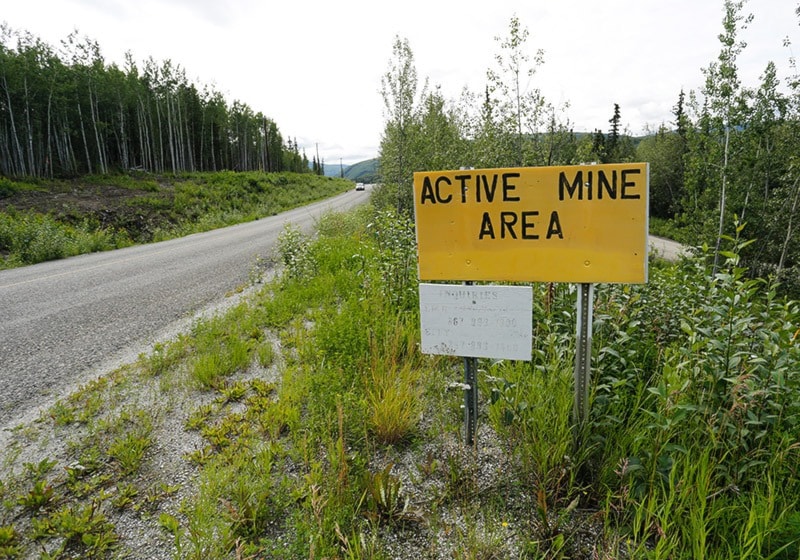A Yukon placer miner is crying foul after the territory’s environmental assessment body, YESAB, recommended rejecting a proposed mining operation in the Klondike.
On Tuesday, YESAB urged the Department of Energy, Mines and Resources to deny Darrell Carey’s plan to mine 34 claims on the east side of the Dome Road in Dawson City.
It did so on the basis that it would disrupt existing skiing and hiking trails on Carey’s claims, and that the disruption couldn’t be mitigated.
It didn’t find the project would significantly impact the environment, wildlife, vegetation, or potential heritage resources.
Carey’s agent told the News Thursday that YESAB failed.
“The whole thing blows my mind,” Randy Clarkson said. Carey is a small-scale placer miner, he said, who is just trying to earn a living.
Carey’s plan includes provisions to have a 100-metre buffer zone around any residence, Clarkson said, and he would be operating a recycling system, meaning there would be no discharge of contaminated water.
For the trails, he offered to create new ones with his mining equipment in case he disrupts any of the existing ones.
“He is doing everything right,” Clarkson said.
YESAB was too afraid to authorize Carey’s plan, merely passing the buck to EMR, he said.
“I’m astounded YESAB has dropped the ball on this.”
Clarkson predicts the government will modify YESAB’s decision. If it doesn’t, it would be in effect expropriating his land, he said.
The government would have to compensate Carey, he added.
But that would open the door to other people who own claims within Dawson City’s boundaries to ask to be bought out, he said.
The Klondike Active Transport and Trails Society (KATTS), which raised concerns about the trails, took issue with Carey’s proposed mitigations.
He is proposing to build exploration trails, not skiing trails, said Cathie Findlay-Brook, president of KATTS.
Mining would also completely change the soil and vegetation.
“We can’t see once a place has been mined… how the skiing, walking or plant harvesting could be in any way similar to the experience we have now,” she said.
The trails are on old exploration trails, not former mines, she said.
But in a follow-up email, Clarkson said this is merely a question of semantics, and the new trails would be similar to the current ones.
“The new trails would be constructed in the forested area above the mining area and where the same spruce forest exists in the same soils,” he said.
Clarkson also noted that Carey is required to put back stockpiled soil, dug out during mining, to allow for revegetation.
KATTS proposed requiring that Carey create 100-metre buffer zones between the mining and the existing trails.
But that would end up covering most of Carey’s claims, Clarkson said. “If that’s their idea of mitigation, that’s crazy.”
During the consultation process, KATTS approached Carey, suggesting he surrender some of his claims. The idea was to prevent mining from happening on the most accessible trails.
The two sides couldn’t reach a compromise.
But Findlay-Brook insists it would be reasonable to compensate Carey for those claims.
The Yukon government has spent millions of dollars on other recreation infrastructure, she said, so it’s not unreasonable to see the compensation as an investment into recreation.
“In the long run it doesn’t really cost any money because it’s totally maintained by volunteers,” she said. “We feel the public’s interest needs to be valued at least as much over the private interest of a person.”
YESAB notes in its decision the trails see a lot of traffic in the winter.
Between Jan. 1 and April 28 of this year, a counter installed by KATTS recorded 3,000 uses of the trail network, which YESAB said is high, given the population of Dawson City in the winter.
The trails are also used in the summer, Findlay-Brook said.
KATTS sent a letter to all party leaders asking them how they would solve the situation. They’ve asked for the parties to answer by today.
EMR has until Nov. 25 to decide whether to accept, reject or modify YESAB’s recommendations.
That deadline can be extended if additional consultation needs to take place, a department spokesperson told the News.
Clarkson fears that because of the current election the whole process will take longer.
“Bureaucrats are very reluctant to make a decision until a new government or the existing one is re-elected,” he said.
Carey first submitted his plan last December but had to withdraw it because of a dispute with his business partner who co-owned some of the claims.
In March, Carey ended up buying out his partner’s claims for over $750,000.
Contact Pierre Chauvin at pierre.chauvin@yukon-news.com
